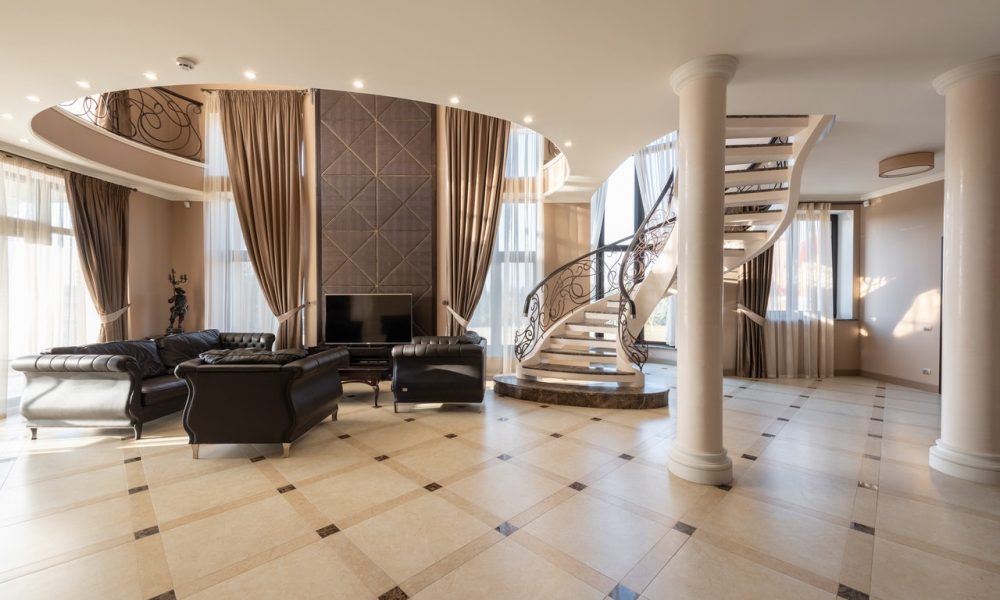
Things to Learn About Interior Design From the Gilded Age

The lavish series of The Gilded Age, set in New York in the last decades of the 19th century, you may wonder its resemblance to certain Edith Wharton’s novels. But Wharton’s first book, The Decoration of Houses gives an all-encompassing vision of interior design. The book has been considered as the equivalent of the King James Version of the bible.

Literary Hub / The Gilded age was known for its unique taste of interior design.
The ballroom is in fact the music room at the breaker. The Renaissance-style palace was designed by architect Richard Morris Haunt and built by Cornelius Vanderbilt II and his wife Alice. The room was made in France and shipped over in 1980. Film-making also took place at The Marble House, constructed by William K Vanderbilt and his spouse, Alva. Here are the things that we can learn from the Gilded Age about interior design:
-
Settle for only the best
It is your civic duty to use and purchase the best things you can afford. When the wealthy man demands good architecture his neighbor will also get it .
According to Wharton, “every carefully exacted idea that can afford to indulge their taste will in time find its way to the carpenter-built house.”
-
Originality is the key
It is pertinent to know in arranging a room what are the needs, not to arrange a room like someone else. In this matter, men are less exacting than women because their demands are simple and uncomplicated as compared to the feminine tendency to want things.

Vecislavas / Pexels / The original and genuine your approach is towards interior design, the better the outcomes will be.
In simple words, stop aspiring to what others have got. Rather, reassess and rearrange your house according to how you want to live. The more you follow this rule, it will be easier to furnish your room and it will be pleasant to live in.
-
Some rules can’t be broken
There are some universal regulations that include avoiding unnecessary windows, ensuring privacy, and making certain tables are so littered with knick-knacks that there isn’t room for books.
-
Don’t overload your room with colors
The fewer the number of colors used in a room, the more attractive and peaceful the environment will be. A multiplicity in colors will produce the same effect as a number of voices talking at the same time. Continuous chatter is wearisome in the long run.
Wharton advised using the same material for curtains and chair covering which creates an impression of unity and air of spaciousness to the room.
-
Marble is the king
Marble was a famous material during the Gilded Age. According to Wharton, marble is ideal for floor, wall, bathroom, and almost everything. The marble House roughly used 2.7 million dollars of white marble brought from a quarry near the Hudson River. Yellow marble from Montagola in Italy and pink from Algeria.

Ena / Pexels/ Marbel adds up to the beauty of the interior of your home.
-
Don’t forget the children
There was no culture of any nurseries or school seen in the Gilded Age, but Wharton was uncompromising regarding the significance of their design. According to Wharton, the room in which the child spends most of his time in studies is more important than the room in which he receives his education. He says that a room not properly arranged will adversely affect the child learning process. This is a wise lesson for all of us that we should make sure that their bedroom offers beauty.
-
Each room has a purpose
Finally, the ballroom and the music room should be quite separate from the family apartments and should be used only for general entertainment purposes. Essentially, the lesson is that each room has its own purpose. This rule should be kept in mind while designing a house.
More in LifeStyle
-
`
Baby Mama Olivia Munn Welcomes First Child With John Mulaney
You might think that this is wholesome news and there is nothing problematic about it – but guess again! As it...
December 23, 2021 -
`
Being A Feminist – The Dad Version
Feminism – an ideology that works to establish social, personal, economic, and political equality of humankind. In this day and age,...
December 22, 2021 -
`
Starting a Business Can Be Overwhelming–Here’s How You Can Get Over Your Fears & Start Building Your Company
Successfully building a business from the ground up, is not an achievement that all people can claim to have done. It...
December 22, 2021 -
`
Too Busy Working as a Corporate Executive to Manage Your Finances? These Are The Simple Steps You Can Take Today
Corporate executives often find themselves in an interesting predicament. After they’ve managed to put in the work to nab the high-paying...
December 21, 2021 -
`
Leonardo DiCaprio Buys a $9.9 Million Beverly Hills Mansion
Leonardo DiCaprio is no stranger in the world of Hollywood – and if you don’t know him, what have you been...
December 17, 2021 -
`
Kevin Hart Drops $7 Million on The Property Next to His Calabasas Mansion
People often say that kindness is making someone laugh, even if it’s only for a moment. Well, going by that logic,...
December 8, 2021 -
`
Two Decades Worth Of Jennifer Aniston’s Real Estate Grabs – Take A Look!
Jennifer Aniston! Who doesn’t know and love the superstar who breathed life into iconic characters like Rachel Green, Rosie Dickinson, Rose...
December 7, 2021 -
`
Let’s Hear it For The Long-Awaited Film, House of Gucci
Have you watched the House of Gucci yet? The movie has got to be one of the most anticipated ones of 2021 –...
December 1, 2021 -
`
Bella Hadid Finds a New Owner For Her NYC Penthouse
Being a supermodel isn’t easy. You’re on the move 24/7. One day you’re in Paris, the other in New York, the...
November 28, 2021















You must be logged in to post a comment Login